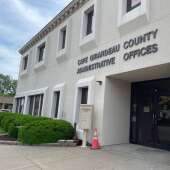Understanding history takes more than the records

Southeast Missourian librarian and history columnist Sharon Sanders and I frequently send questions to each other that pique our respective interest. Sometimes she’s asking me for what the record says, and sometimes I’m asking her if a particular case made the newspaper — a case’s outcome is not always included in the Archive Center’s files, but the newspaper often fills in that gap.
In fact, newspaper coverage fills in a lot of gaps in the record. That’s why it’s called newspaper coverage, and not record coverage. The record is not intended for a general audience and includes only information that would help move the case through the system, where it lands at the Archive for posterity.
Take the case of Robert Matteson and the 28 homes that nearly went up on the auction block after his death in 1921. Matteson owned about 3.25 acres in Cape Girardeau, north of Broadway and bordered by North Pacific Street and Henderson Avenue, on what is now Southeast Missouri State University’s campus and beyond. He operated a quarry on part of that property, which later became the site of the school’s athletic field. “28 Cape Homes are Advertised for Sale: Some of Cape Girardeau’s Finest Residences, on Pacific, Broadway and Henderson, Involved in Unusual Legal Mix-up” reads a headline from the Aug. 28, 1924, edition of the Southeast Missourian. Those homes, according to the article, included several prominent families’ names, among them Mayor James Barks and the Fred Neimeyer store. Each landowner had secured a deed of trust from Mr. Matteson prior to 1919, when Matteson mortgaged property he owned to borrow money to operate his business.
The problem? The legal description of the property put up for the mortgage included those lots he’d already sold to other people. That meant all 28 landowners technically had a problem, in that a creditor was after their property to settle a debt — which had included their land by mistake.
Sharon asked me if I had anything on this case at the Archive, so I checked first for Robert Matteson’s estate papers. The file was disappointingly slim, containing three sheets of paper: his will, a mere two pages naming his heirs, and a proof of will, stating that a will exists. No inventory was included, nothing describing a legal battle after his death. So I headed to the Archive’s court case database, and nothing came up under Robert Matteson’s name.
By then, Sharon had discovered a follow-up article from Sept. 3, 1924, “Homes, Booked for Sale, are Taken Off List: Owners of $200,000 Worth of Residence Property Learn Status.” Oscar Knehans, who handled the legal arrangements, explained to the newspaper that the sale would include only property actually owned by the Matteson estate.
Since the case was settled outside of court and there wasn’t mention of it in the estate papers, this is yet another example of how newspapers and the official court record complement each other. The court record is not always fully complete with every detail a researcher would be seeking, and the newspaper can provide vital context that helps tell our history more fully.
































Respond to this story
Posting a comment requires a subscription.